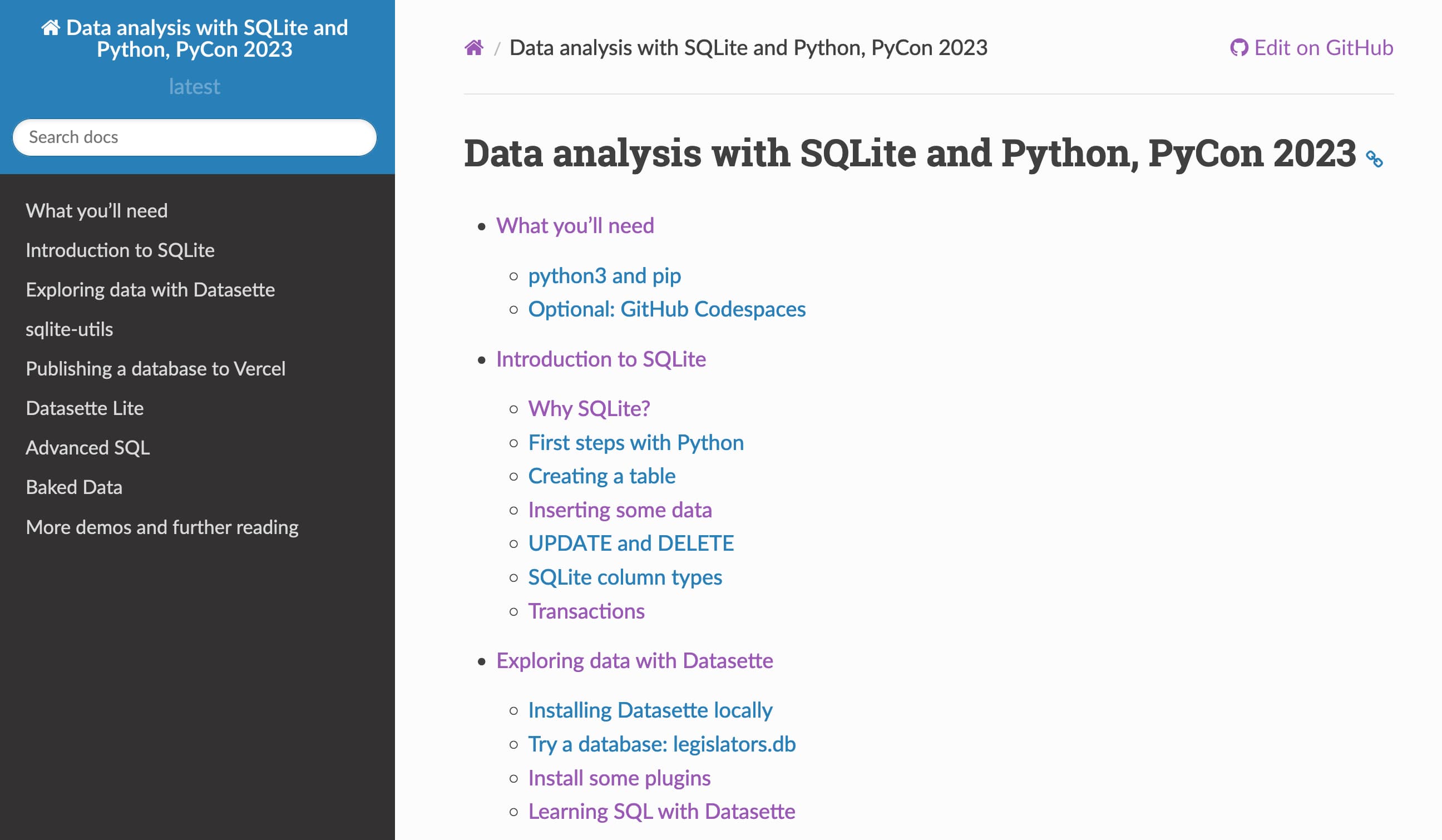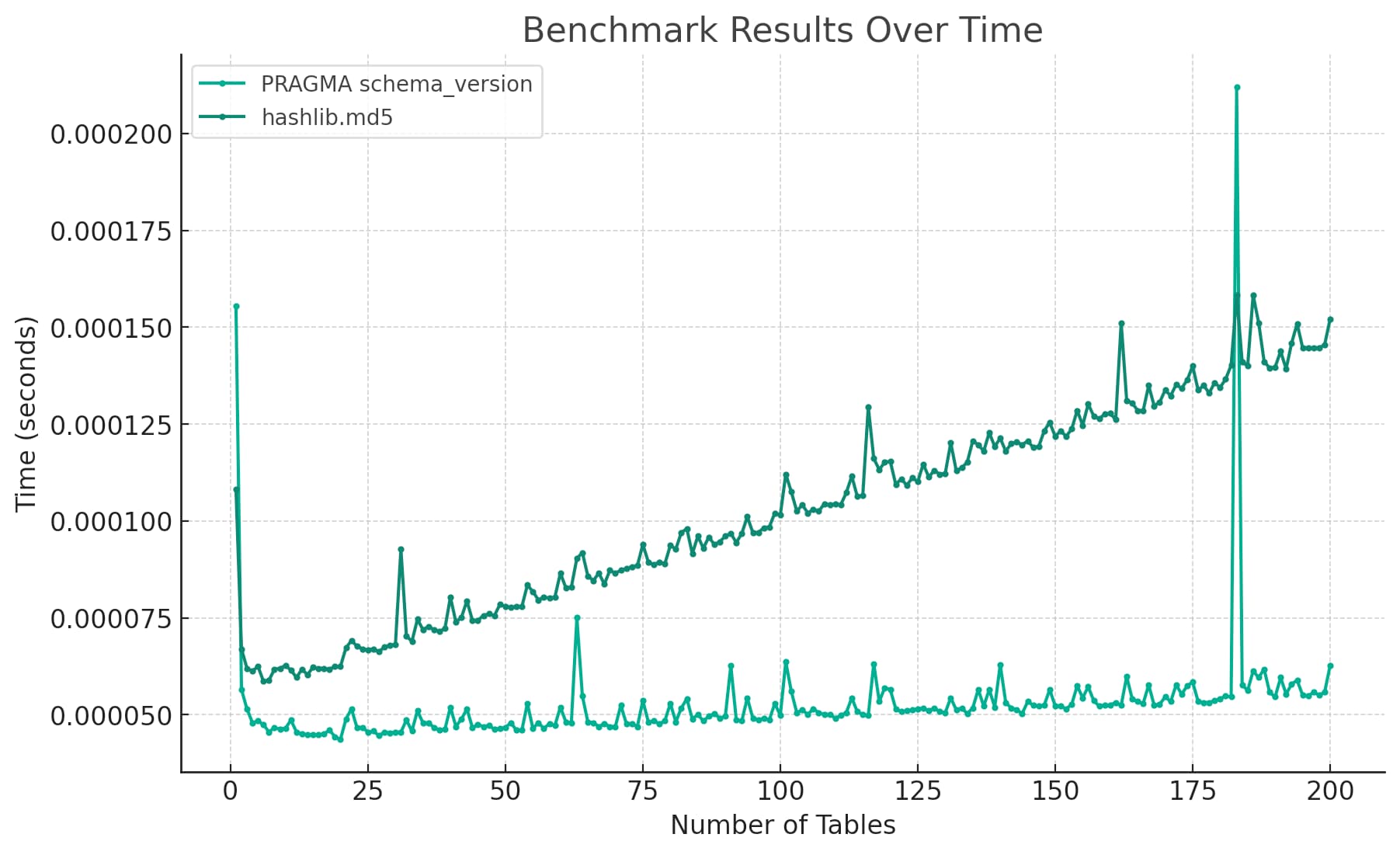1,216 posts tagged “python”
The Python programming language.
2023
urllib3 v2.0.0 is now generally available. urllib3 is 12 years old now, and is a common low-level dependency for packages like requests and httpx. The biggest new feature in v2 is a higher-level API: resp = urllib3.request(“GET”, “https://example.com”)—a very welcome addition to the library.
Rye.
Armin Ronacher's take on a Python packaging tool. There are a lot of interesting ideas in this one - it's written in Rust, configured using pyproject.toml and has some very strong opinions, including completely hiding pip from view and insisting you use rye add package instead. Notably, it doesn't use the system Python at all: instead, it downloads a pre-compiled standalone Python from Gregory Szorc's python-build-standalone project - the same approach I used for the Datasette Desktop Electron app.
Armin warns that this is just an exploration, with no guarantees of future maintenance - and even has an issue open titled Should Rye exist?
Introducing PyPI Organizations. Launched at PyCon US today: Organizations allow packages on the Python Package Index to be owned by a group, not an individual user account. “We’re making organizations available to community projects for free, forever, and to corporate projects for a small fee.”—this is the first revenue generating PyPI feature.
Data analysis with SQLite and Python for PyCon 2023
I’m at PyCon 2023 in Salt Lake City this week.
[... 347 words]codespaces-jupyter (via) This is really neat. Click “Use this template” -> “Open in a codespace” and you get a full in-browser VS Code interface where you can open existing notebook files (or create new ones) and start playing with them straight away.
Running Python micro-benchmarks using the ChatGPT Code Interpreter alpha
Today I wanted to understand the performance difference between two Python implementations of a mechanism to detect changes to a SQLite database schema. I rendered the difference between the two as this chart:
[... 2,939 words]My strong hunch is that the GIL does not need removing, if a) subinterpreters have their own GILs and b) an efficient way is provided to pass (some) data between subinterpreters lock free and c) we find good patterns to make working with subinterpreters work.
Several libraries let you declare objects with type-hinted members and automatically derive validation rules and serialization/deserialization from the type hints – Pydantic is the most popular, but alternatives like msgspec are out there too. There’s also a whole new generation of web frameworks like FastAPI and Starlite which use type hints at runtime to do not just input validation and serialization/deserialization but also things like dependency injection.
Personally, I’ve seen more significant gains in productivity from those runtime usages of Python’s type hints than from any static ahead-of-time type checking, which mostly is only useful to me as documentation.
The different uses of Python type hints (via) Luke Plant describes five different categories for how Python optional types are being used today: IDE assistants, type checking, runtime behavior changes via introspection (e.g. Pydantic), code documentation, compiler instructions (ala mypyc)—and a bonus sixth, dependency injection.
textual-mandelbrot (via) I love this: run “pipx install textual-mandelbrot” and then “mandelexp” to get an interactive Mandelbrot fractal exploration interface right there in your terminal, built on top of Textual. The code for this is only 250 lines of Python and delightfully easy to follow.
A simple Python implementation of the ReAct pattern for LLMs. I implemented the ReAct pattern (for Reason+Act) described in this paper. It's a pattern where you implement additional actions that an LLM can take - searching Wikipedia or running calculations for example - and then teach it how to request that those actions are run, then feed their results back into the LLM.
djngo.com: Portable Django (via) “A 20mb executable zip file with Python 3.6 and Django 2.2. Works on Windows, Linux, MacOSX with x86_64 and aarch64 (yes, Apple M1 and Raspberry Pi).” The latest wizardry from the ecosystem surrounding the Cosmopolitan project, which provides a should-be-impossible mechanism for running the same executable on a bunch of different platforms. This utility by Ariel Núñez bundles Python and Django and SQLite, such that a Django application can become a portable executable ready to run on multiple platforms. It’s currently limited to Python 3.6 and Django 2.2 since those are the versions that run under Cosmopolitan, but I expect we’ll see more recent versions of those dependencies in the future.
PocketPy. PocketPy is “a lightweight(~5000 LOC) Python interpreter for game engines”. It’s implemented as a single C++ header which provides an impressive subset of the Python language: functions, dictionaries, lists, strings and basic classes too. There’s also a browser demo that loads a 766.66 KB pypocket.wasm file (240.72 KB compressed) and uses it to power a basic terminal interface. I tried and failed to get that pypocket.wasm file working from wasmer/wasmtime/wasm3—it should make a really neat lightweight language to run in a WebAssembly sandbox.
Making SQLite extensions pip install-able (via) Alex Garcia figured out how to bundle a compiled SQLite extension in a Python wheel (building different wheels for different platforms) and publish them to PyPI. This is a huge leap forward in terms of the usability of SQLite extensions, which have previously been pretty difficult to actually install and run. Alex also created Datasette plugins that depend on his packages, so you can now “datasette install datasette-sqlite-regex” (or datasette-sqlite-ulid, datasette-sqlite-fastrand, datasette-sqlite-jsonschema) to gain access to his custom SQLite extensions in your Datasette instance. It even works with “datasette publish --install” to deploy to Vercel, Fly.io and Cloud Run.
Python’s “Disappointing” Superpowers. Luke Plant provides a fascinating detailed list of Python libraries that use dynamic meta-programming tricks in interesting ways—including SQLAlchemy, Django, Werkzeug, pytest and more.
pyfakefs usage (via) New to me pytest fixture library that provides a really easy way to mock Python’s filesystem functions—open(), os.path.listdir() and so on—so a test can run against a fake set of files. This looks incredibly useful.
Python Sandbox in Web Assembly (via) Jim Kring responded to my questions on Mastodon about running Python in a WASM sandbox by building this repo, which demonstrates using wasmer-python to run a build of Python 3.6 compiled to WebAssembly, complete with protected access to a sandbox directory.
Mapping Python to LLVM (via) Codon is a fascinating new entry in the “compile Python code to something else” world—this time targeting LLVM. Ariya Shajii describes in great detail how it pulls this off, including tricks such as transforming Python generators to LLVM coroutines. Codon doesn’t promise that all Python code will work—it’s best thought of as a Python-like language which can be used to create compiled modules which can then be imported back into regular Python projects.
nanoGPT. “The simplest, fastest repository for training/finetuning medium-sized GPTs”—by Andrej Karpathy, in about 600 lines of Python.
2022
Boring Python: code quality. James Bennett provides an opinionated guide to setting up Python tools for linting, code formatting and and other code quality concerns. Of particular interest to me is his section on packaging checks, which introduces a whole bunch of new-to-me tools that can help avoid accidentally shipping broken packages to PyPI.
PyScript Updates: Bytecode Alliance, Pyodide, and MicroPython. Absolutely huge news about Python on the Web tucked into this announcement: Anaconda have managed to get a version of MicroPython compiled to WebAssembly running in the browser. Pyodide weighs in at around 6.5MB compressed, but the MicroPython build is just 303KB—the size of a large image. This makes Python in the web browser applicable to so many more potential areas.
Chris Amico’s Python setup for 2022 (via) Homebrew to install pyenv, then pyenv to install specific Python versions. pipx and pipenv for package management. I need to habitually start using pyenv for everything.
How to create a Python package in 2022 (via) Fantastic tutorial on modern Python packaging by Rodrigo Girão Serrão. I’ve been meaning to figure out Poetry for a while now and this gave me exactly the information I needed to start figuring it out. Great coverage of GitHub Actions, Tox and pre-commit as well.
py2rs. Extremely useful document providing resources for learning Rust followed by an extensive collection of common Python tasks (building a list, opening a file, spawning a thread, running a simple web server) and their Rust equivalents.
PEP 554 – Multiple Interpreters in the Stdlib: Shared data (via) Python 3.12 hopes to introduce multiple interpreters as part of the Python standard library, so Python code will be able to launch subinterpreters, each with their own independent GIL. This will allow Python code to execute on multiple CPU cores at the same time while ensuring existing code (and C modules) that rely on the GIL continue to work.
The obvious question here is how data will be shared between those interpreters. This PEP proposes a channels mechanism, where channels can be used to send just basic Python types between interpreters: None, bytes, str, int and channels themselves (I wonder why not floats?)
Deploying Python web apps as AWS Lambda functions. After literally years of failed half-hearted attempts, I finally managed to deploy an ASGI Python web application (Datasette) to an AWS Lambda function! Here are my extensive notes.
APSW is now available on PyPI. News I missed from June: the venerable (17+ years old) APSW SQLite library for Python is now officially available on PyPI as a set of wheels, built using cibuildwheel. This is a really big deal: APSW is an extremely well maintained library which exposes way more low-level SQLite functionality than the standard library’s sqlite3 module, and to-date one of the only disadvantages of using it was the need to install it independently of PyPI. Now you can just run “pip install apsw”.
TIL: You Can Build Portable Binaries of Python Applications (via) Hynek Schlawack on the brilliant PyOxidizer by Gregory Szorc.
Should You Use Upper Bound Version Constraints?
(via)
Should you pin your library's dependencies using "click>=7,<8" or "click~=7.0"? Henry Schreiner's short answer is no, and his long answer is an exhaustive essay covering every conceivable aspect of this thorny Python packaging problem.
storysniffer (via) Ben Welsh built a small Python library that guesses if a URL points to an article on a news website, or if it’s more likely to be a category page or /about page or similar. I really like this as an example of what you can do with a tiny machine learning model: the model is bundled as a ~3MB pickle file as part of the package, and the repository includes the Jupyter notebook that was used to train it.

